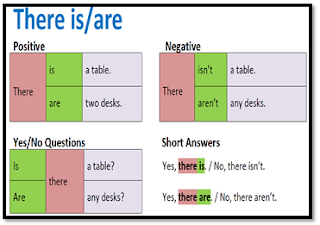A
forma verbal em inglês there to be expressa sentido de haver,
existir ou ter, em português. Em inglês, o verbo varia de acordo com o número,
de singular para plural, e de acordo com a variação temporal de presente para
passado e futuro.
O there to be é constituído pelo there + o verbo to be (is/are). Logo temos duas formas, o there is e o there are. A primeira significa existe, há, ou tem; a segunda, existem, há.
Observe:
|
Presente
singular afirmativo |
Presente
plural afirmativo |
|
There is a car in the street. (Existe um carro na rua.) |
There are 2 books in my bag. (Há 2 livros na minha bolsa.) |
|
There is someone waiting for you. (Há alguém esperando por
você.) |
There are some dogs in the garden. (Há alguns cachorros no
jardim.) |
*Para a forma negativa, apenas acrescentamos a palavra NOT.
Observe:
|
Presente
singular negativo |
Presente
plural negativo |
|
There is not a car in the street. (Não existe um carro na
rua) |
There are not 2 books in my bag. (Não há 2 livros na minha
bolsa.) |
|
There is not someone waiting for you. (Não há alguém
esperando por você.) |
There are not some dogs in the garden. (Não há alguns
cachorros no jardim.) |
*Para a forma interrogativa, apenas trocamos o verbo to
be com o there, observe:
|
Presente
singular interrogativo |
Presente
plural interrogativo |
|
Is there a car in the street? (Há um carro na rua?) |
Are there 2 books in my bag? (Há 2 livros na minha bolsa?) |
|
Is there someone waiting for you? (Há alguém esperando por
você?) |
Are there some dogs in the garden? (Há alguns cachorros no
jardim?) |
*Formas abreviadas:
·
There is: there’s
·
There is not: There isn’t
·
There are not: There aren’t

Comments
Post a Comment